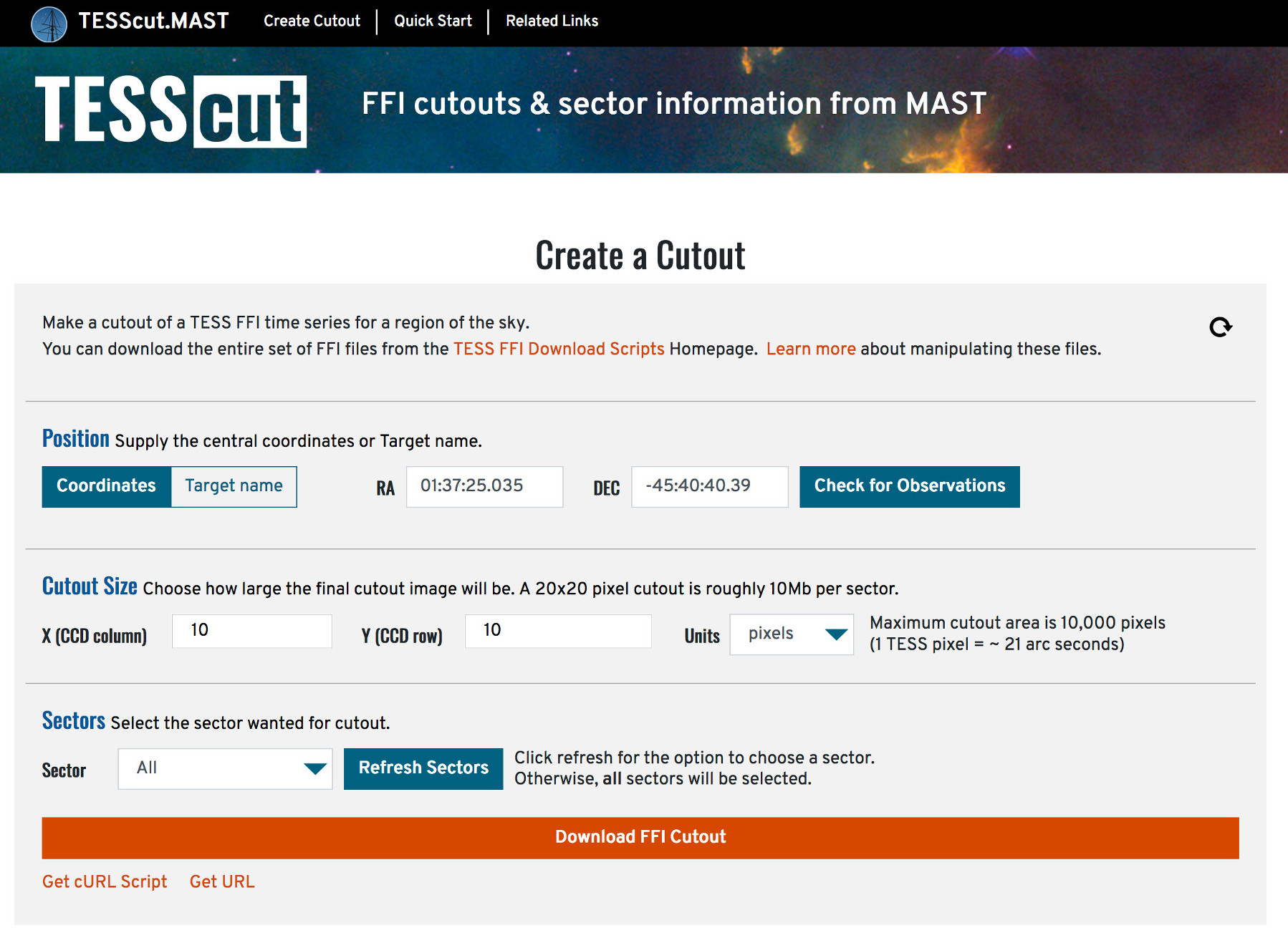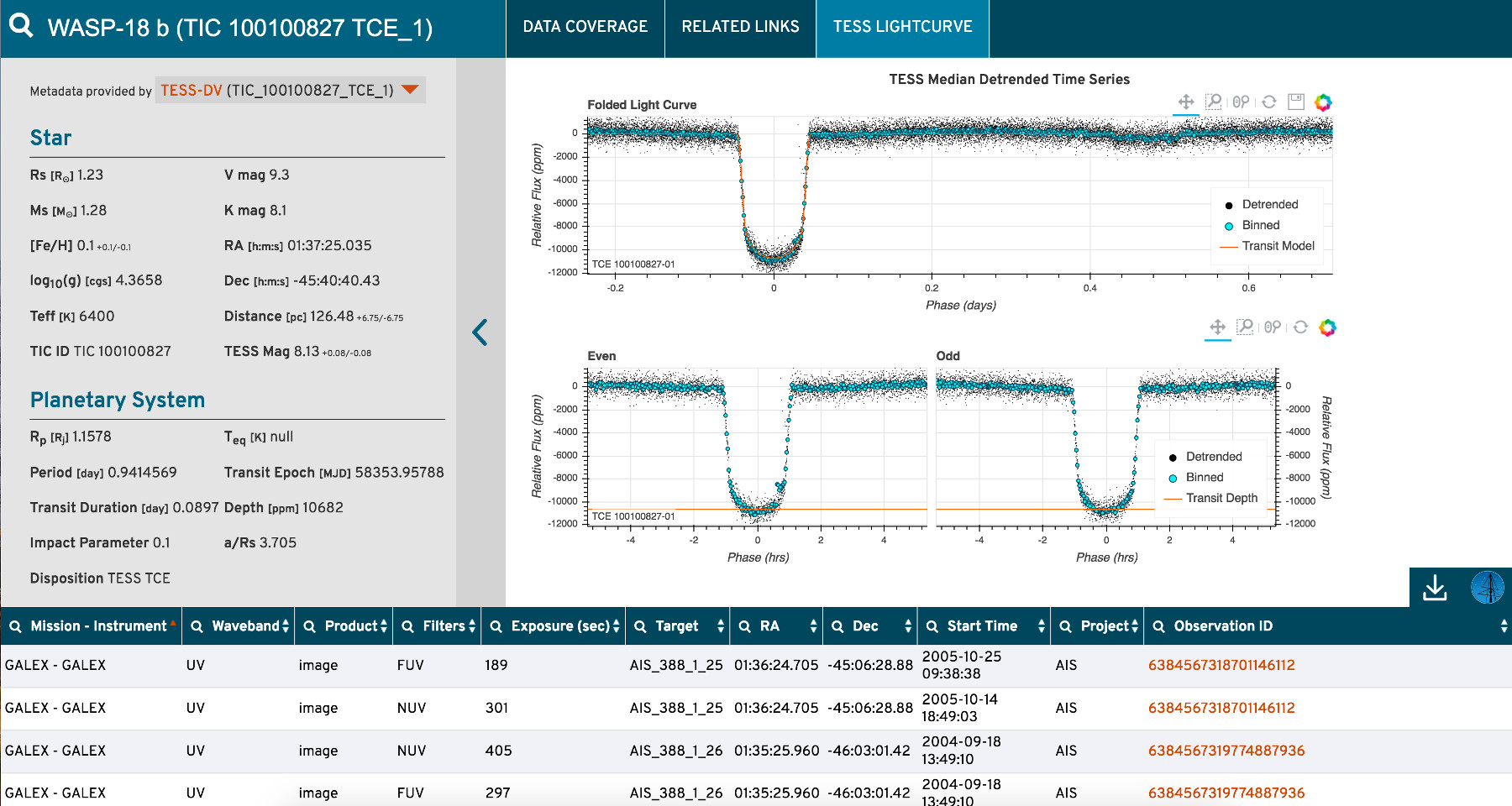TESS Mission Data Now Available
All data from TESS Observation Sectors 1 and 2 are now publicly available for download with a number of MAST services.
The first batch of Transiting Exoplanet Survey Satellite (TESS) mission data is now available through MAST! This release includes all data from Sectors 1 and 2, observed between July 25 and September 20, 2018. Data products include 2-minute cadence target pixel files (*_tp.fits), extracted light curves (*_lc.fits), and 30-minute cadence full frame images (*_ffic.fits) among others. Now, anybody can access these data products, opening an exciting phase of community discovery with TESS data.


For a brief overview of MAST services available for TESS data, please see our summary page. To dive in deeper, the TESS Archive Manual details the different TESS data products, tutorials on how to use them, and detailed instructions on how to download them from MAST. The official TESS Instrument Handbook and data release notes for these sectors are also available.
MAST provides several ways to access TESS data, each with their own specialized purpose:- Obtain data for individual targets using the MAST Portal.
- Preview TESS folded light curves for known exoplanets using exo.MAST, and find data from complementary MAST missions.
- Include TESS data retrieval routines in scripts using the MAST API.
- Obtain a time series of images for any target within TESS FFIs using TESScut (avoid downloading the entire sector of data!).
- Download all data by Observation Sector or GI Program with Bulk Downloads.
The TESS mission is a NASA Astrophysics Explorer mission launched by a SpaceX Falcon 9 rocket on April 18, 2018. TESS is currently conducting an all-sky survey for transiting extrasolar planets around nearby and bright stars. TESS will produce an invaluable set of exoplanet candidates, which are highly amenable for follow-up spectroscopic characterization to determine the planet masses and atmospheric compositions. In addition, TESS’s wide-area time-series images will have lasting value for stellar and Galactic astrophysics.
STScI will also be hosting a workshop in February to provide talks, tutorials, and some hands-on sessions with TESS data. Any further questions on accessing and using TESS mission data products can be submitted to the Archive Helpdesk.

Funding for the TESS mission is provided by NASA’s Science Mission directorate. TESS team partners include the Massachusetts Institute of Technology, the Kavli Institute for Astrophysics and Space Research, NASA’s Goddard Space Flight Center, MIT’s Lincoln Laboratory, Orbital ATK, NASA’s Ames Research Center, the Harvard-Smithsonian Center for Astrophysics, and the Space Telescope Science Institute.


